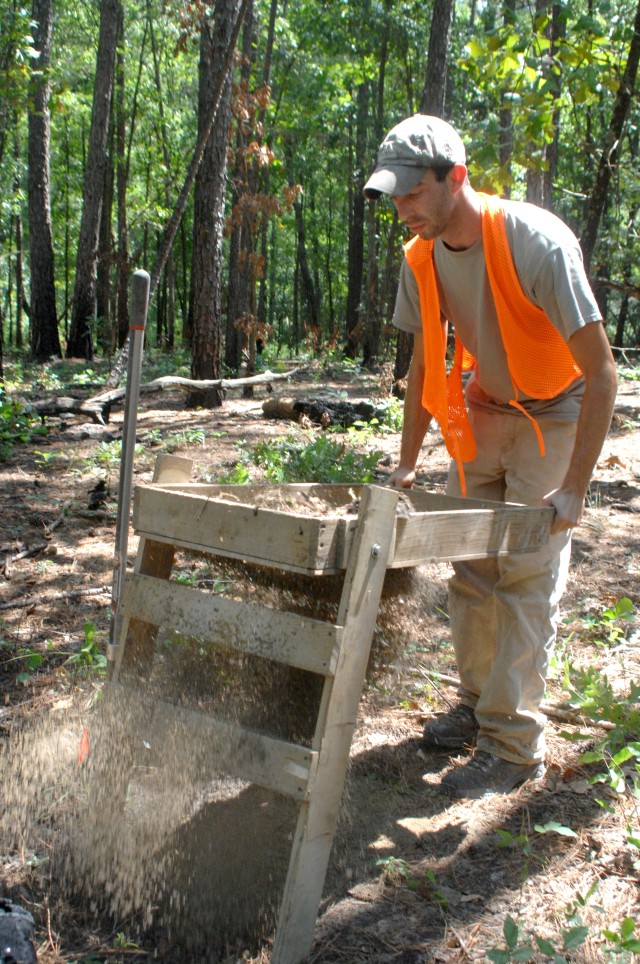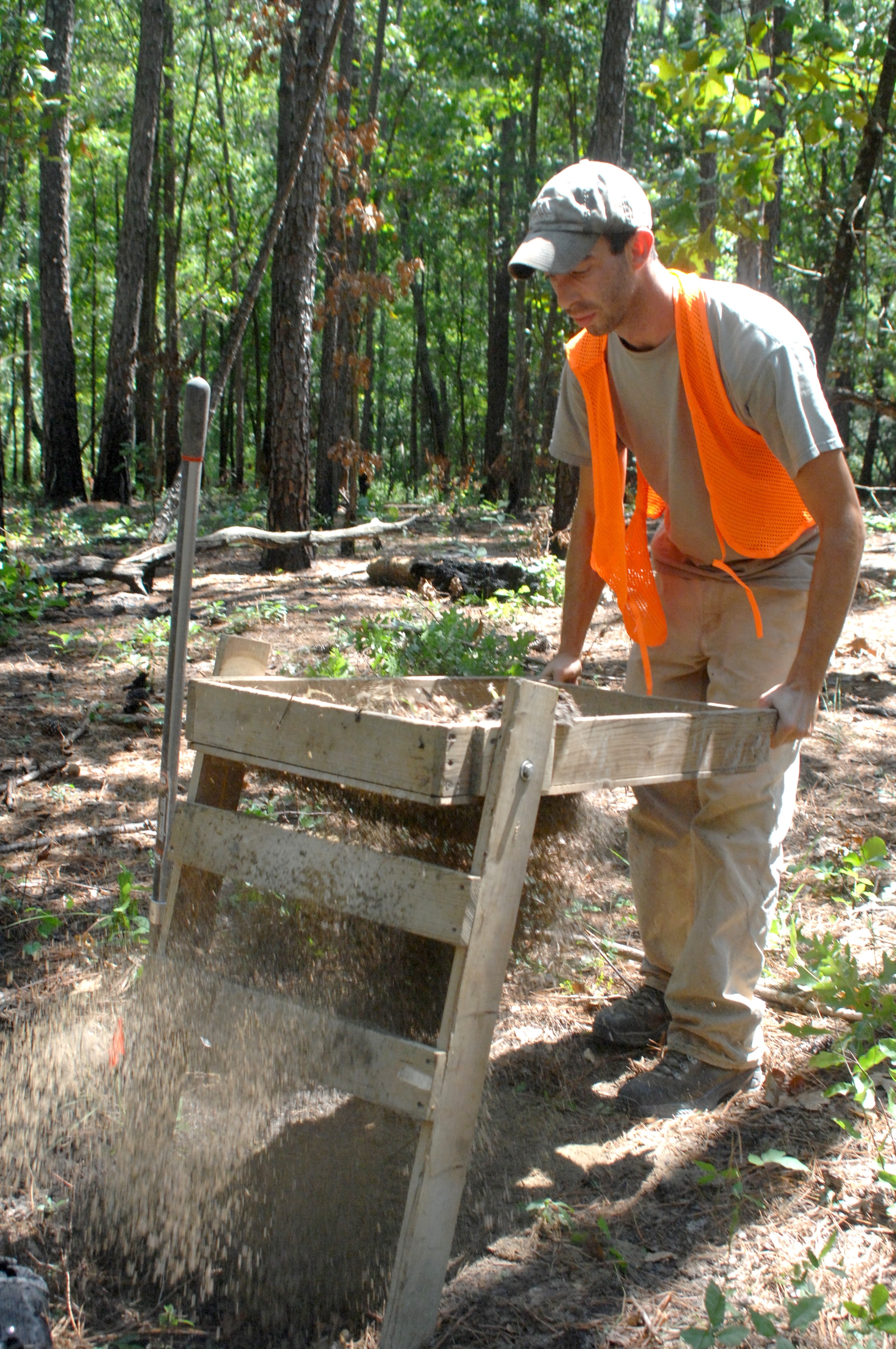FORT BRAGG, N.C. - Slowing down to take a closer look at the ground might not fit into the exercise plans of those who enjoy running and biking along the more woodsy and secluded trails near Bones Creek across the road from Range 50.
For Dr. Linda F. Carnes-McNaughton, archaeologist and curator with the Fort Bragg Cultural Resources Program and a small team of civilian contractors, what lays beneath the ground is as interesting as the forested landscape above for runners and bikers who pass by.
Beginning in July, Jay Gray, an archaeologist and field director with TRC Environmental, along with his team of archaeological field technicians, have been conducting an intermediary archaeological survey of the land here, which Fort Bragg wants to develop into a residential area.
"We actually help the Army to comply with federal legislation that says (they) can't just go in and destroy an archaeological site, particularly if (the site is) funded through the local, state or federal government," said Gray.
The legislation, known as the Archaeological Resources Protection Act, was first past in 1979. Anytime Fort Bragg wants to develop a piece of land, such as widening a road or putting in new buildings, they must first give researchers adequate time to collect as much historical information about the area as possible, Carnes-McNaughton said.
Thus far, the survey team has uncovered artifacts that date between the second millennium B.C. and the arrival of the Scots and Scots-Irish people in the 1700s.
In archaeological terms, this is considered to be a later period.
"Like most parts of Fort Bragg, most of (the artifacts) we're finding is from the later periods and that's probably because there (were) just more people around ... The Woodland period is what we refer to it as," said Gray. "It's after the advent of pottery and some agriculture."
To find these artifacts, Gray and his team are currently digging holes known as shovel tests about five meters apart. The field technicians dig these holes, which cover a small surface area through the sandy layers of sediment until they reach the first layer of clay, he said.
The soil removed from the ground is put into a shaker where field technicians sift through it for artifacts.
Once an artifact is found, it is documented and then taken to be curated by the Cultural Resources Management Program on post.
"We curate all the field data - the artifacts, the maps, photographs," said Carnes-McNaughton. "Any documentation that (field
technicians) take then also comes to us, and it's a permanent record of that site and the history of that site."
The current archaeological survey, known as a stage II testing project, is actually a follow up of a survey Gray took part in last year.
"There are a certain number of sites we found that we thought had significant research potential where it was worth coming back and taking a second look," he said. "So, we're actually here to check out whether or not this site is important enough that they need to excavate it entirely and do a data-recovery project or whether or not we can eliminate it in terms of it being redundant in the archaeological world."
Gray and his team will likely spend a few more months working on this stage of the project before they know if the sites they are currently investigating warrant a full-on excavation.
Grey said they hope to be done by Thanksgiving. As of yet, he and his team still don't know whether the site warrants a more in-depth archaeological study. Finding artifacts from the Paleoindian era, which dates back to about 9000 B.C., could justify further research.
In order to understand what's going on at Fort Bragg during the Paleoindian era, any site found from that era would almost certainly be excavated or protected, Gray said.
"Those materials are significant in this area because they're so rare, that if we found an intact site, or intact occupation with the site where somebody camped during those time periods, we would definitely have to come out and do some more excavations," he added.
Although the archaeological studies might delay development on post, construction may certainly continue after the land has been surveyed.
As long as archaeologists have had the chance to do a full data recovery project on a site, For Bragg can still develop the land, said Gray. After collecting, documenting and curating the artifacts, the general public can have the opportunity to learn more about the history of the area.
"If we find exemplary pieces, say something that's very, very old, or something that's very significant about that site, we can do several things with it.
One of the things we can do is we can put it on display and create an exhibit around it as part of our responsibility of giving that information back to the public," said Carnes-McNaughton.
For her, passing on the knowledge to the community is one of the key elements of working for the Fort Bragg Cultural Resources Management Program.
"We sort of have this approach that this is everyone's history," she said. "Everyone has a right to know it. We're sort of the technicians who go about excavating and interpreting it."
Those who want to learn more about the Fort Bragg Cultural Resources Management Program, can contact them at 396-6680 or visit the Web site at http://www.bragg.army.mil/culturalresources/.


Social Sharing